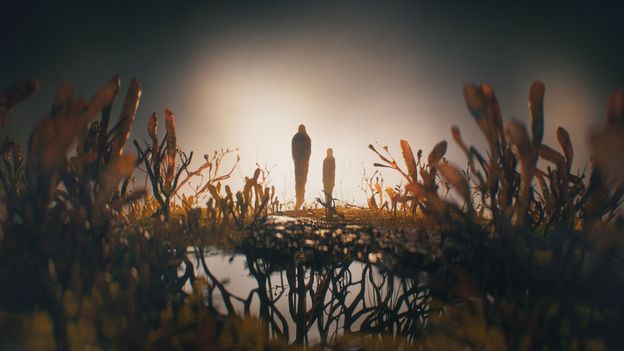
It makes sense that creativity in title sequences was shifting from film to television as TV itself became increasingly cinematic. The Sopranos ushered in the era of prestige TV – and its opening credits set the scene for something special.
“When you think about that title sequence, with Tony driving from New York into New Jersey, establishing his domain, showing exactly where his kingdom lies and the way the camera frames and establishes him as a leader, the kingpin, and as this mysterious figure… it just lent so much gravitas, and gave you so much insight into the situation of the show,” says Lola Landekic, editor in chief of Art of the Title, a publication dedicated to title sequence design in TV and film. “It became such an important bridge into the world of the show.”
The theme song – Alabama 3’s Woke Up This Morning (which the band apparently licensed to the show for just $500) – is now inextricably linked with Tony Soprano, too. “I think whenever anyone hears that song now, it’s so impossible to think of it on its own. It has taken on this entire character of the show now,” says Landekic. “Something like that can really extend the life of a show and embed it so deeply into viewers’ minds that it just creates this deeper appreciation and deeper connection.”
Landekic, a graphic designer, has been editor since 2011 of the Art of the Title site, where the mission is “to make people aware of the blood, sweat and tears that goes into these beautiful pieces of art that they experience”.
But when there’s now the option to skip the intro completely, why are shows still putting so much effort into them? Landekic says the rise of streaming services and sheer amount of TV we have to choose from demands it. “There’s a sort of titles arms race to compete for viewers. This branding of the show becomes much more intense, much more important to draw in viewers and maintain that foothold in someone’s memory in a field that is so saturated now with product. Ultimately, when you’re creating any kind of cultural product, what you’re looking for is connection. The branding of that show, or that product, is what gets you there. I think not paying attention to that is a huge mistake.”